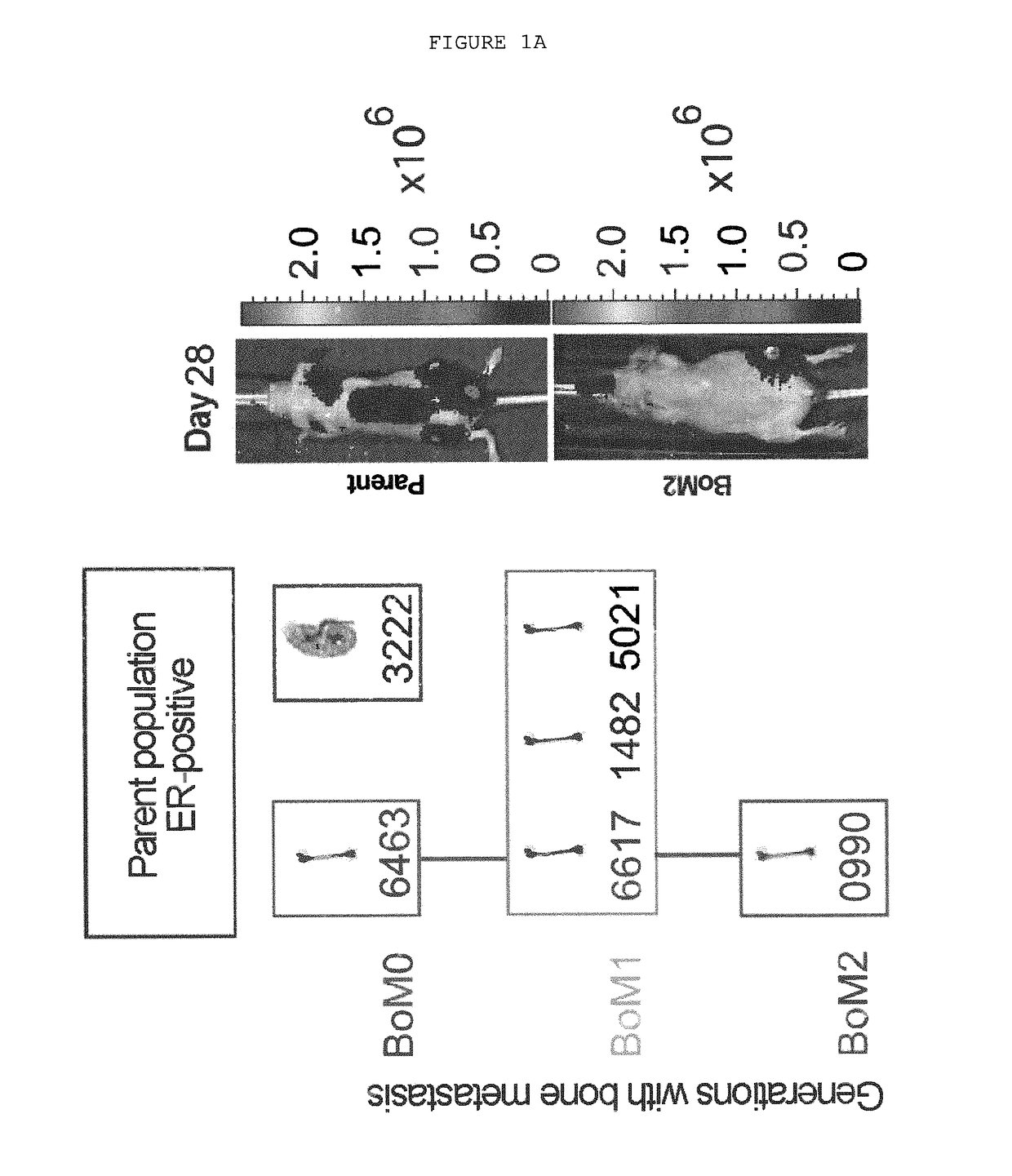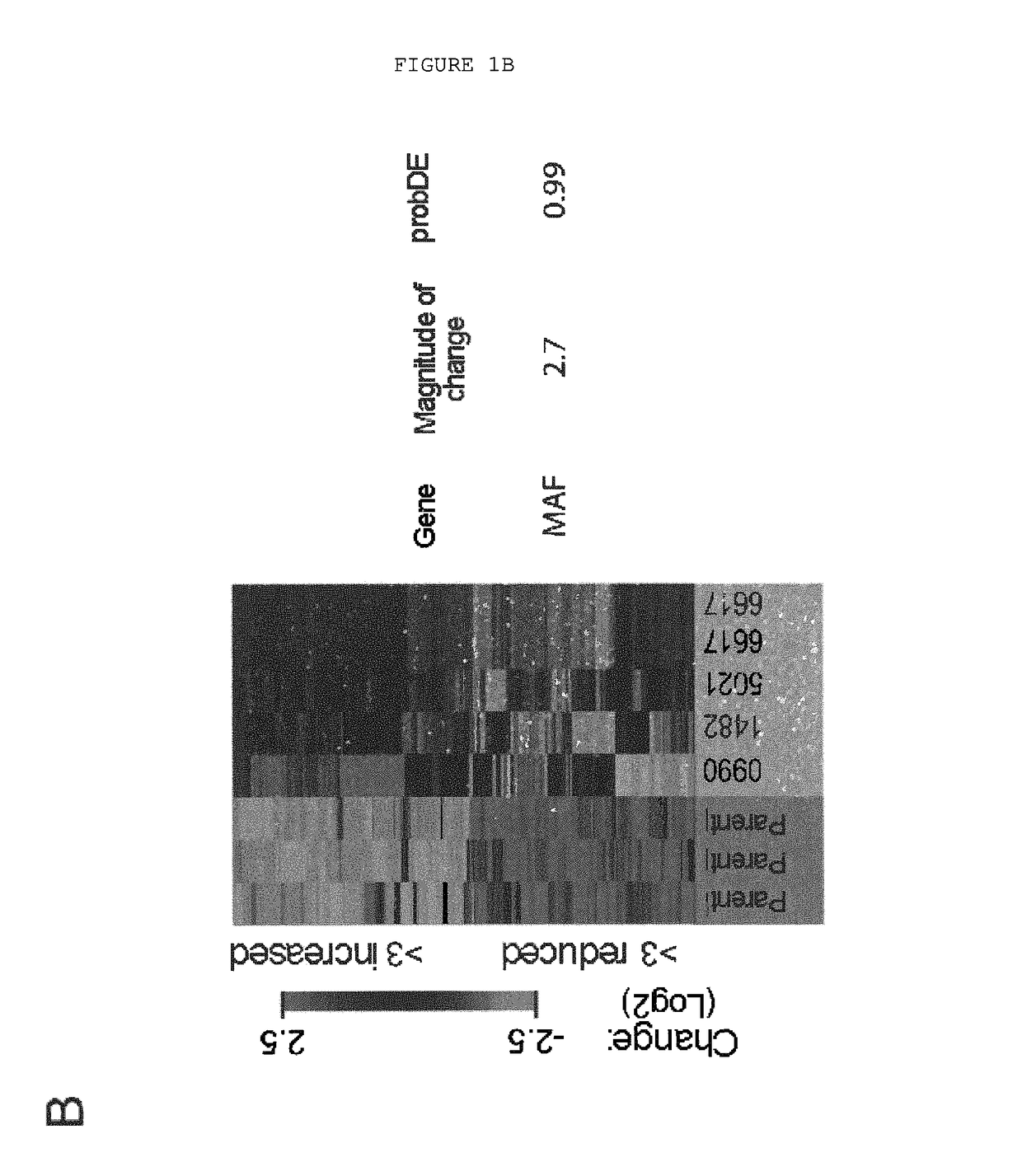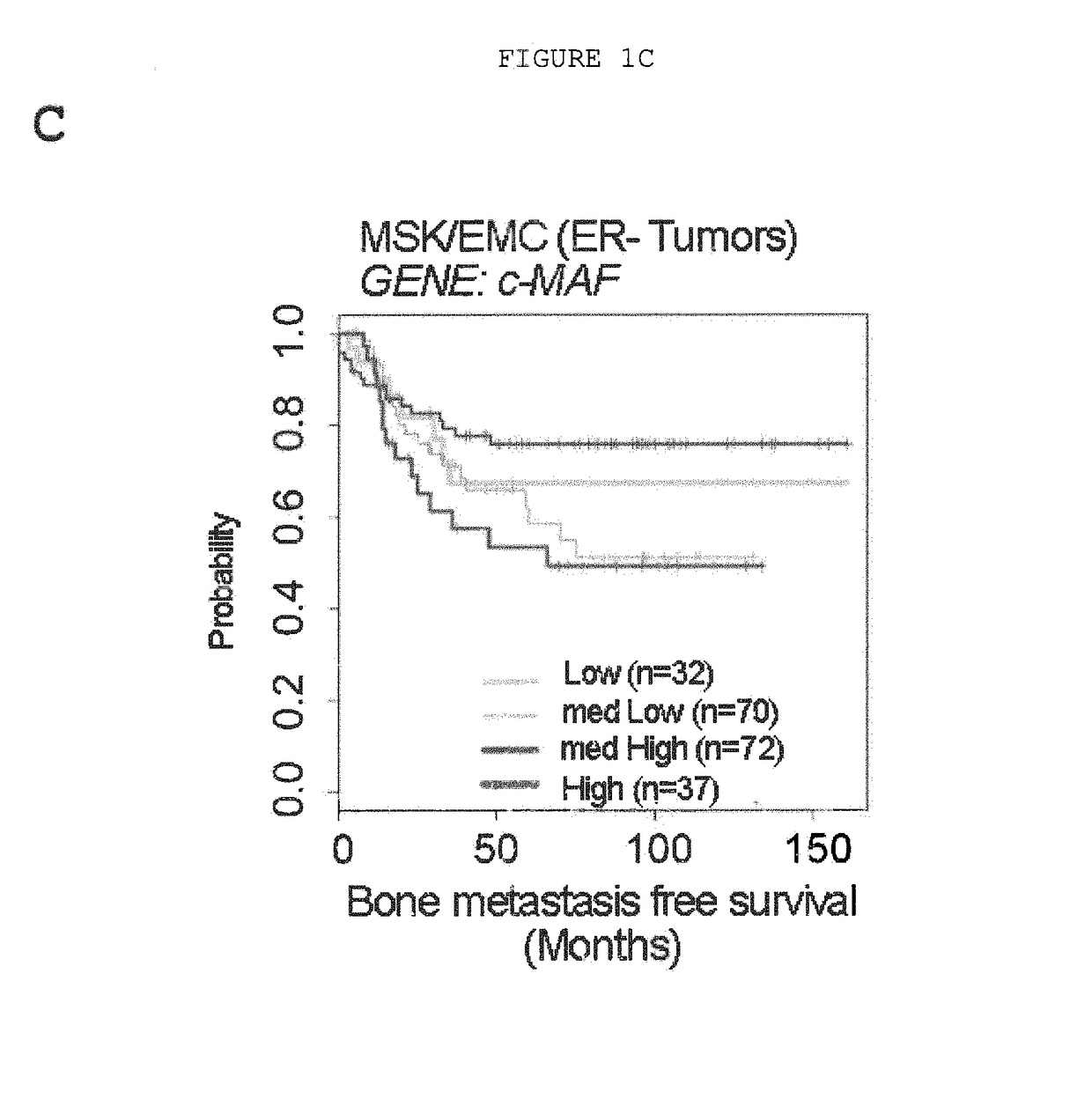Method for the diagnosis, prognosis and treatment of breast cancer metastasis
a breast cancer and metastasis technology, applied in the direction of instruments, drug compositions, group 5/15 element organic compounds, etc., to achieve the effect of avoiding preventing or preventing bone degradation
- Summary
- Abstract
- Description
- Claims
- Application Information
AI Technical Summary
Benefits of technology
Problems solved by technology
Method used
Image
Examples
example 1
Selecting Relevant Genes
[0204]An analysis was conducted for selecting genes which are expressed in a differential manner in cells derived from an ER+ breast cancer cell line with tendency to form bone metastasis (FIG. 1A). The analysis conducted allowed identifying 91 genes enriched or silenced in the cell lines derived from the MCF7 ER+ cell line with capacity of metastasizing in bone (FIG. 1B). The genes and single determinant functions were selected for a more detailed study following the following criteria:[0205]i) Clinical correlation with aggressive ER+ breast cancer and bone metastasis[0206]ii) Functions previously known by participating in processes compatibles with an aggressive phenotype (e.g., bone reabsorption, inflammation, angiogenesis),[0207]iii) Variations in the expression level between the metastatic populations in comparison to the parent populations as has been described above, and[0208]iv) Central role in the gene regulation networks and the cell signaling pathw...
example 2
Therapeutic Value and Prognosis Value of the Genes Enriched for Bone Metastasis Regardless of the Subtype of Breast Cancer
[0209]The genes enriched in the bone metastasis by means of the experimental system for selecting metastatic cell populations implemented herein were evaluated against two different databases containing the expression profiles and the clinical notes of 560 primary breast cancer tumors and 58 metastasis of breast cancer patients. These tumors are representative of all the subtypes of breast cancer and metastasis location. Both databases and their clinical notes are publicly accessible (GSE 2603, 2034, 12276 and 14020).
[0210]The gene expression in ER+ primary tumors of the genes of bone metastasis correlated significantly with recurrence, metastasis-free survival and survival (FIGS. 1C and D).
[0211]In addition, the c-MAF gene expression levels in metastatic tissue in a cohort of 58 metastasis of breast cancer patients (GSE 14020) were evaluated. These metastases we...
example 3
In Vivo Functional Validation of the c-MAF Bone Metastatic Gene in ER− Breast Cancer
[0212]The c-MAF metastatic gene which was positive in the analysis was functionally validated in a bone metastatic colonization assay in an experimental graft model of breast cancer metastasis in mice. The selection of ER− breast cancer cells with high ability for growing in bone is accompanied by the selection of high levels of the c-MAF metastatic gene (FIG. 2B).
[0213]The approximations performed to validate the candidate gene to direct the metastasis process were gain-of-function assays. For this purpose, the c-MAF gene was expressed in the parent MDA-MB-231 cells and subsequently its capacity for inducing the expression of genes contributing to the metastasis (CTGF) (FIG. 2C), was evaluated.
PUM
| Property | Measurement | Unit |
|---|---|---|
| body weight | aaaaa | aaaaa |
| nucleic acid based detection assay | aaaaa | aaaaa |
| fluorescence | aaaaa | aaaaa |
Abstract
Description
Claims
Application Information
 Login to View More
Login to View More - R&D
- Intellectual Property
- Life Sciences
- Materials
- Tech Scout
- Unparalleled Data Quality
- Higher Quality Content
- 60% Fewer Hallucinations
Browse by: Latest US Patents, China's latest patents, Technical Efficacy Thesaurus, Application Domain, Technology Topic, Popular Technical Reports.
© 2025 PatSnap. All rights reserved.Legal|Privacy policy|Modern Slavery Act Transparency Statement|Sitemap|About US| Contact US: help@patsnap.com



